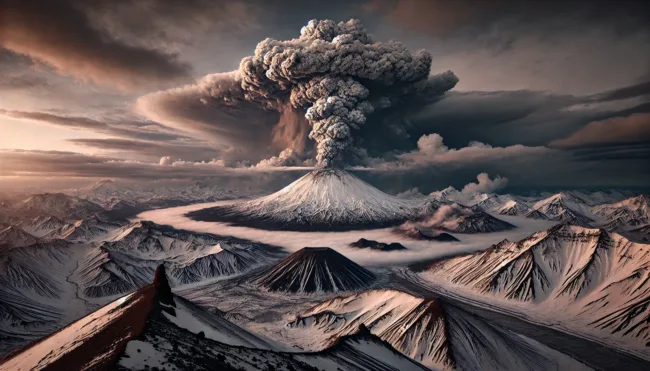Shiveluch erupts after massive 7.0 quake hits Kamchatka Peninsula: What you need to know
On Sunday, a powerful 7.0 magnitude earthquake struck off Russia’s Kamchatka Peninsula, triggering the eruption of the Shiveluch volcano, one of the region’s most active volcanic sites. The earthquake, which occurred at a depth of 18 kilometres beneath the seabed, caused Shiveluch to erupt violently, spewing ash plumes as high as 5 kilometres into the atmosphere. This eruption prompted a brief “code red” warning for aircraft due to the potential hazard posed by the ash cloud, although the alert was later downgraded as no commercial flights were disrupted.
Ash Cloud and Eruption Impact
The Kamchatka Volcanic Eruption Response Team reported that the ash cloud extended over 490 kilometres east and southeast of Shiveluch, significantly impacting the region. The ash fallout has led to reduced visibility and air quality issues in affected areas. The earthquake’s epicentre was located 108 kilometres southeast of Petropavlovsk-Kamchatsky, a coastal city with over 180,000 residents and a crucial Russian submarine base. Residents of Petropavlovsk-Kamchatsky described the tremors as intense, drawing comparisons to the 9.0 magnitude earthquake that struck the region in 1952, which remains one of the most devastating seismic events in recent history.

Powerful 7.0 Earthquake Causes Shiveluch Volcano Eruption in Russia’s Kamchatka Peninsula
Volcanic Activity Beyond Shiveluch
In addition to the Shiveluch eruption, the Ebeko volcano on the Kuril Islands, situated approximately 800 kilometres northeast of Shiveluch, also erupted. The Ebeko volcano emitted ash clouds that reached altitudes of 2.5 kilometres. The timing of these eruptions raises concerns about the region’s geological stability, although it remains uncertain if the earthquake directly triggered the volcanic activity at Ebeko.
Geological Implications and Scientific Warnings
Russian scientists have warned that the initial earthquake might be a precursor to a more powerful seismic event. The Kamchatka Peninsula, part of the Pacific Ring of Fire, is one of the world’s most seismically active regions. It has experienced frequent volcanic eruptions and earthquakes due to its location at the convergence of several tectonic plates. The recent activity underscores the complex interplay between seismic and volcanic processes in the region.
Historical data highlights the region’s susceptibility to significant geological events. For instance, the 2003 eruption of the Kurile-Kamchatka Arc volcanoes, which includes Shiveluch, had far-reaching impacts on air traffic and local infrastructure. The 2003 eruption saw ash clouds that disrupted air travel across the northern Pacific, illustrating the potential for widespread impact from such volcanic events.
Current Situation and Monitoring Efforts
Despite the intense seismic and volcanic activity, there have been no immediate reports of injuries or significant damage. Local authorities and the Russian Academy of Sciences are closely monitoring the situation. They are advising residents to remain vigilant and prepared for potential further developments. The Kamchatka Peninsula’s seismic activity and volcanic eruptions pose ongoing challenges for local communities and underscore the need for robust disaster preparedness measures.
Global Context
The recent events in Kamchatka resonate within the broader context of global volcanic and seismic activity. The Pacific Ring of Fire, which encircles the Pacific Ocean basin, is home to over 75% of the world’s active volcanoes and frequently experiences significant seismic events. The interplay between volcanic eruptions and earthquakes in this region is a subject of ongoing scientific research, aiming to better understand and predict the impacts of these natural phenomena.
The situation in Kamchatka serves as a stark reminder of the dynamic and unpredictable nature of Earth’s geological processes, where the dual threats of powerful earthquakes and volcanic eruptions pose persistent challenges for affected communities.
Discover more from Business-News-Today.com
Subscribe to get the latest posts sent to your email.

